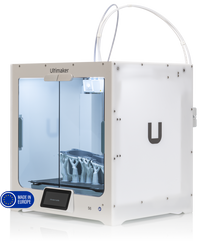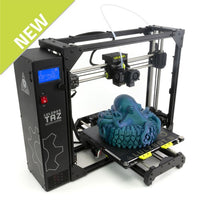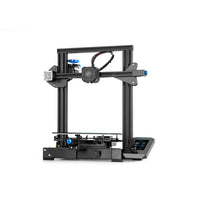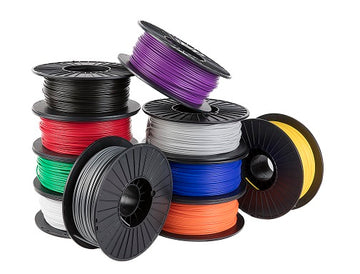3D Printing in Manufacturing
How is 3D printing used in Manufacturing?
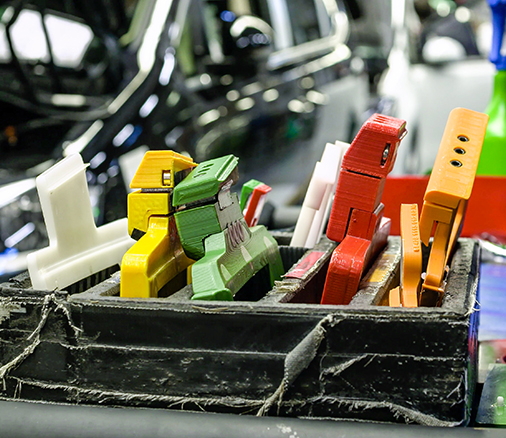
3D printing was once called Rapid Prototyping, but has since exceeded its boundaries. For production series, it promises on-demand parts with many additional success factors: surface finish, tolerance, homogeneity, strength, labor and cycle times. We at Print Your Mind have investigated the suitability of 3D printing for manufacturing applications, and these are our conclusions.
Schubert
Gerard Schubert GmbH is known as a leader around the world in to-loading packaging machines. For their industry leading digital, robot-based packaging they employ a combination of using basic mechanics, intelligent control technology, and high modularity. Now, 3D printing is helping to enhance their solutions even further with their "digital warehouse" offering.
Volkswagon Autoeuropa
Learn how Volkswagon Autoeuropa has saved € 150,000 after having supplemented their assembly plant with 3D printed solutions. The transition to 3D printing saved Volkswagen Autoeuropa 91% in tool development costs and reduced development time by 95%.
Sylatech: Casting Metal Parts from 3D Prints
Sylatech uses 3D printing as part of their investment casting process. Before using 3D printers, customers had to directly invest in tooling needed for making their specific design in metal. However, if their metal part needs modifications, this can become a time consuming and costly addition to the process. Using a desktop 3D printer, the prototype can be finalized before investing in tooling for larger volume productions, cutting the risk of such changes.
3D Printing End Use Parts
A great example of end-use part production is the Aleph Objects print cluster. A true testiment to the reliability of Lulzbot 3D printers is the fact that they have over 155 Lulzbot printers printing parts for their new machines every day. In fact, they just produced their two millionth part using their printer farm.
Each LulzBot 3D printer contains over thirty printed parts. The 2-millionth part, a Z-axis Carriage Idler that faclitates smooth tool head motion across the Z- and X-axis, was printed unceremoniously, and then the Cluster moved on to start printing the next million. If this seems at all weird and slightly sci-fi to you, you’re on the right track. Machines making machines, evolving in real-time, but fortunately without the impending Hollywood Armageddon. In reality, this is how some of the most reliable 3D printers on the planet are made - from themselves.
Since a variety of parts are needed during production, flexibility is essential to the Cluster's success in meeting those demands. “The alternative to having Cluster producing those parts would be injection molding everything, but the injection molding cost for a die could be thousands of dollars and upward,” Stan Middlekauff, Cluster production supervisor, said. “With the Cluster now in place, the up-front cost has been paid for us to make any type of part. Plus, if at any moment in time we need to change a part, we can change it quickly.”
From when the Cluster began operating in 2011, it took nearly 5 years to print the first million production-grade parts. Since then, it’s only taken a year and a half to reach the 2 million mark – an indication of the increased efficiency and speed of production supporting demand for LulzBot 3D Printers. With two to four trained professionals monitoring the Cluster at all times, daily production can range anywhere from 1,000 to 15,000 parts and use 45 to 50 kilograms of ABS plastic in the process.
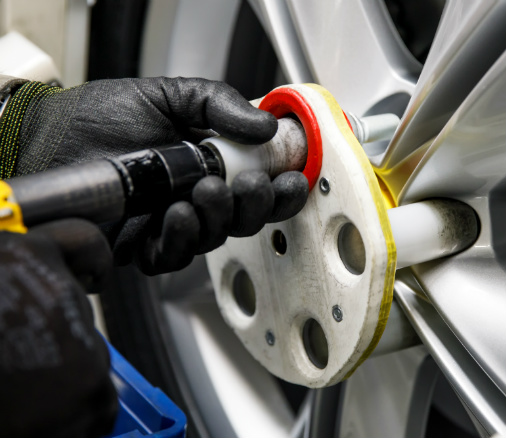
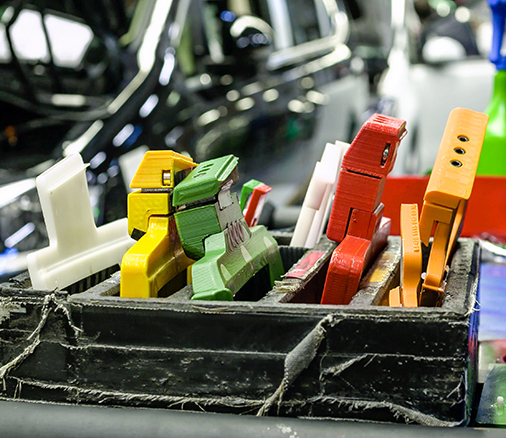
3D Printing and Mass Manufacturing go Hand in Hand
Volkswagen has saved € 150,000 after having supplemented their assembly plant with 3D printed solutions. Smartly designed, easily replaceable and modifiable tools can be designed for workers that allow them to do complex tasks, and jigs can be developed that were formerly difficult to produce. For small volumes of cast components, 3D printed molds or burnout mother models can tremendously save tooling costs. All this can be achieved with desktop-based 3D printers
The company was able to acheive a 91% cost reduction along with 95% time reduction thanks to switching to producing these production parts with in-house 3D printers. "The timings and costs to produce tools led us to a fast ROI, better product quality and satisfaction throughout the entire process – from development stages to the final product. Our innovative 3D printed products are being used in several areas and are considered best practices within the Volkswagen Group" said Luis Pascoa, Pilot Plant Manager at Volkswagen Autoeuropa.
Before working with Ultimaker 3D printers, Volkswagen Autoeuropa used third-party suppliers to manufacture their custom tools and prototypes. The process took several weeks, especially when multiple designs or assemblies were required. It also meant more paperwork, quotations, and the adoption of a trial-and-error approach, all of which were holding up the tool manufacturing process – at additional cost.
By producing the tools in-house, Volkswagen Autoeuropa can skip the purchasing department and has the ability to develop ideas for new or improved tools together with the operators. That was previously impossible as only a few ideas could actually be implemented in a timely manner.


3D Prints are Strong
3D Printing technology was first industrialized as stereolithography (SLA) in the early 1980s. Prints were made of a fragile, costly UV-cured resin. But now we have several strong materials available at negligible costs that can be used on our Ultimaker and Lulzbot desktop machines. It is inevitable that parts are built up in layers, and that layer bonds are the weakest part of the print. However, with the right settings you can derive components close to industrial quality.
Using high strength & temperature materials gets you the strongest parts and lowering the layer height further increases strength, good enough to produce say, golf balls. Consider nylon, polycarbonate or ABS filaments to guarantee high grade prints. What’s more, you can smooth out ABS prints in acetone, fusing together the outer layers thereby adding strength and a smooth, glossy surface.
Did you know that there are Cura slicer plugins that enable you to create stronger prints? As the weakest points of a print are the straight lines between layers, we can also move the nozzle in the Z-direction for true three-dimensional printing with the Skew and Wave plugins. The TweakAtZ plugin allows you to change print settings in order to add strength to the sections where you need it most. Additional settings in Cura enable you to fill the gaps between outer walls, select tetrahedral infill for stronger parts, use gradual infill for having high infill only where required, print infill before walls and adjust the fan to cool minimally so the layers are still hot enough to bond well.
Do you want to recieve more helpful articles like this one sent right to your inbox? Sign up for our newsletter today!

Automation
We at Print Your Mind are always looking out for great 3D printing solutions and one direction we are looking at are printers that enable setting up your own small production line. With the Ultimaker 3 for example, you can control your 3D printer from a distance and monitor the print through its integrated webcam. With Octoprint you can reach the same functionality for the TAZ 6. Its automatic bed-calibration ensures optimal results for each print. An upcoming development is a conveyor belt style printing bed that makes room for new prints, the finished ones automatically being collected. You can even print guide parts to keep all products stacked after collection to aid packaging and distribution or alternatively, orchestrate a robot to switch print beds between prints. Just a single robot arm can operate up to a hundred 3D printers at a fifth of the cost of a traditional mold-based manufacturing station, with a break-even point of just six months. We expect these systems to become more and more commonplace so you can create your own production line or even have these become part of existing production lines.
If you are involved in manufacturing, now is the time to rethink your process chain and weigh the costs and benefits of 3D printing. You will be amazed!

